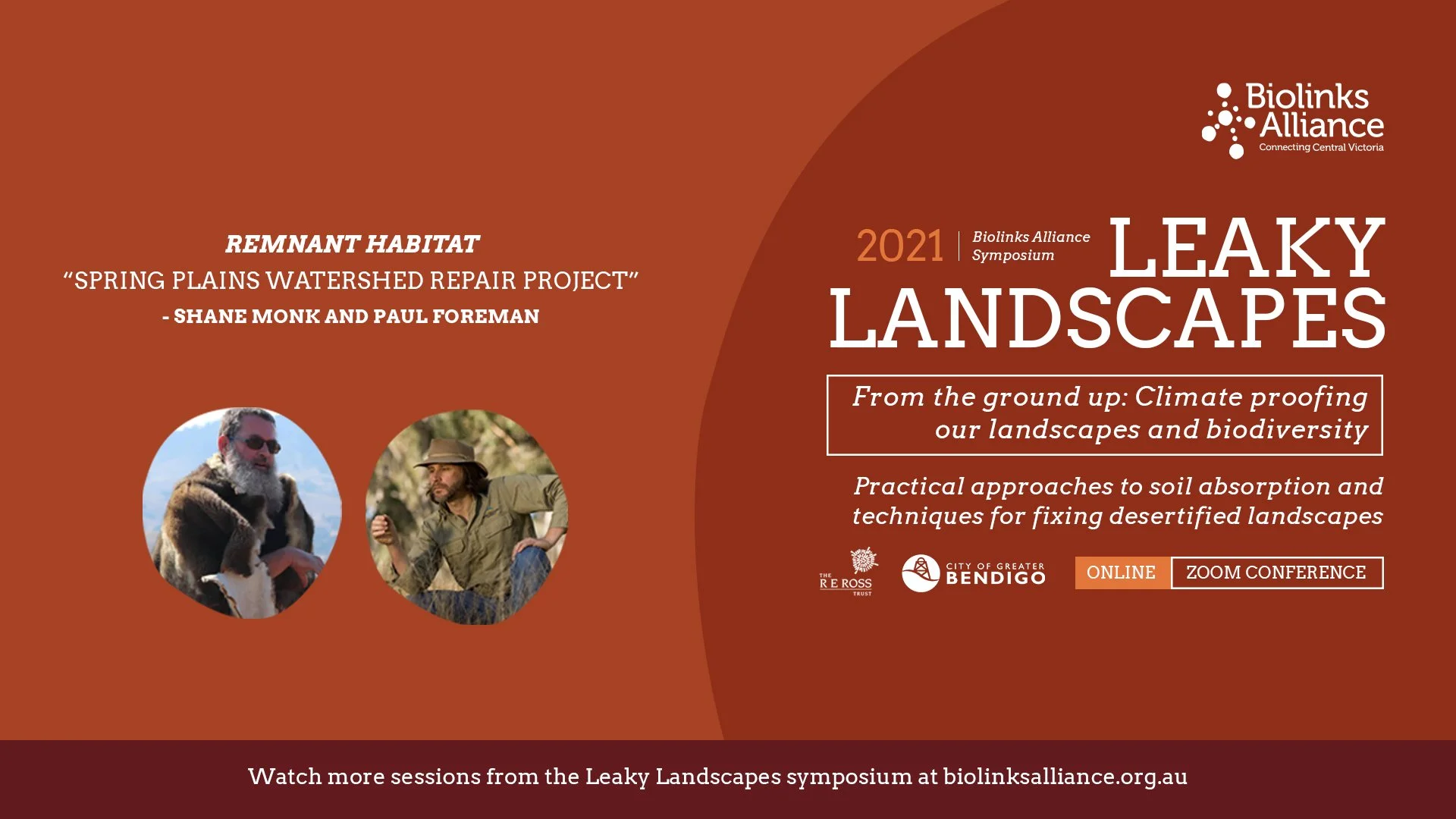This webinar explores the link between on-farm natural capital and woodland birds, and how we can exploit that for a better future for woodland birds and people.
Read MoreIn our second webinar about ‘rewilding’, as part of our 2024 Monthly Webinar Series, hear from Derek Sandow who is the Marna Banggara Project Manager at the Northern and Yorke Landscape Board.
Read MoreDiscover at this webinar how the Spring Plains Watershed Repair Pilot Project paves the way for a new approach to building climate resilience and restoring biodiversity in Goldfields landscapes at scale and speed, and how Biolinks Alliance is looking to share and help adapt it for use in other landscapes across the region.
Read MoreDr Chris Pocknee talks about the specialised approach of ecological thinning, one of the innovative interventions used at our Watershed Repair Pilot Project at Spring Plains Nature Conservation Reserve (NCR) on Taungurung country. This technique is used in dense regrowth Box Ironbark forest to accelerate forest maturation and restore biodiversity.
Read MoreUnderstanding hydrological and sub-soil dynamics
Read MoreFacilitating recovery: Marshalling food web dynamics and engaging landholders to keep our woodlands thriving
Read MoreHarnessing the activity of soil disturbing animals to restore degraded woodlands
Read MoreMulloon Rehydration Initiative, a catchment scale rehydration project
Read MoreSpring Plains Watershed Repair project
Read MoreParks Victoria’s Box Ironbark forest ecological thinning trials
Read MorePractical considerations for Ecological thinning
Read MoreThe application of Landscape Function Analysis (LFA) to the Restoration of Disturbed Landscapes
Read MoreThis workshop showcases ecological restoration projects designed to repair the hydrological function, soil health and associated biodiversity of damaged ‘natural’ bushland that has been highly altered by past land uses. Under discussion will be practical approaches for restoration, learnings from trials and how trials can be scaled-up for greater impact at landscape scales.
Read MoreRegenerative agriculture has been at the forefront of the development of systems and tools to restore water-availability and soil health of landscapes - seeking techniques that require reading how ecosystems and landscapes function and working with natural processes to repair them. This workshop will showcase exemplary properties and projects that have undertaken rehydration and restoration works in production settings. How can regenerative agriculture be a meaningful part of the solution to Australia’s biodiversity crisis, will be a key focus of discussion in the workshop.
Read MoreProfessor David Watson - “Facilitating recovery: marshalling food web dynamics and engaging landholders to keep our woodlands thriving” and Professor David Eldridge UNSW - “Harnessing the activity of soil disturbing animals to restore degraded woodlands”
Read MoreDr David Tongway - “The application of Landscape Function Analysis (LFA) to the Restoration of Disturbed Landscapes” and Dr Jon Fawcett - CDM Smith “Understanding hydrological and sub-soil dynamics”
Read MoreUrgency and climate change - Repairing Victorian Landscapes - Spring Plains Watershed Repair project
Read MoreFoundational repair - Repairing Victorian Landscapes - The Spring Plains Watershed Repair project
Read MoreStagnant forest - Repairing Victorian Landscapes - The Spring Plains Watershed Repair project
Read MoreThe Spring Plains Nature Conservation Reserve, on Taungurung country, in central Victoria is a local hotspot for Swift Parrots and other threatened species. However, its damaged soils are no longer porous enough to absorb rainfall, so less water is available to the landscape and its food webs. Like many other box-ironbark forests, the ecosystem is so damaged that it cannot recover without active restoration interventions.
Read More



















